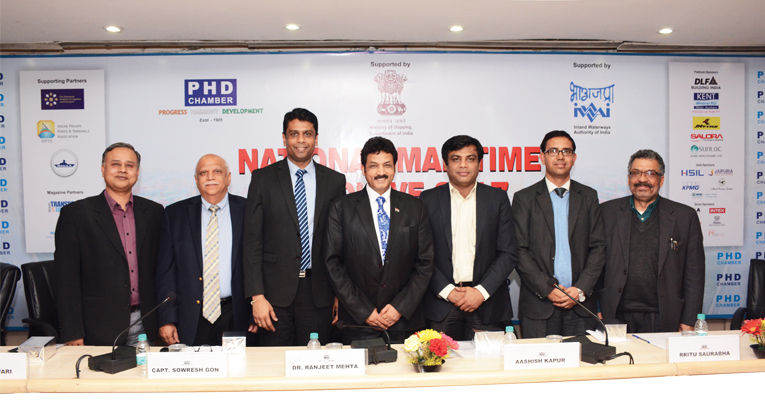Indian Maritime Sector Poised to grow

The Indian maritime sector is poised to make great progress in the coming years. Despite the fact, the Indian maritime sector faces a number of challenges viz. lack of coordination in port traffic management, non-uniform tariff structure, high turnaround time, low draft & siltation, poor connectivity to hinterland, delay in getting environment clearances.
Rashmi Pradhan The government has launched a series of initiatives to boost and revive the Indian maritime sector. Most notable is the Sagarmala initiative, which aims to transform existing ports and integrate the development of ports, industrial clusters and hinterland evacuation. It is estimated that India can save up to $28 billion in infrastructure investment and another $3.3 billion in transportation cost if 50 percent of overall trade moves closer to ports by 2020. Realising the importance of Indian maritime sector, PHD Chamber of Commerce & Industry organised National Maritime Conclave 2017 in New Delhi in January. The conclave was a platform to discuss developments of maritime sector and to share best practices. The event deliberated on current policies and government initiatives in the maritime sector, infrastructure development, investment opportunities and role of technology in transforming maritime sector. Despite of the above, the Indian maritime sector faces a number of challenges like lack of coordination in port traffic management, non-uniform tariff structure, high turnaround time, low draft and siltation, poor connectivity to hinterland, delay in getting environment clearances, etc. Highlighting the scenario of inland waterways in India, Amitabh Verma, Chairman, Inland Waterways Authority of India, said, “In a sector which could have provided a good supplement mode of transport, we have achieved very little. In 1986, the Indian Waterways Authority was created to give due focus to this sector. From 1986-2012, we have achieved very little in the sector that has huge potential. India spent Rs 1,700 crores, which is very little compared to China that spent Rs 78,000 crore from 2005-2010 and Germany that spent 12 billion Euros in 2012.” Talking about the challenges faced, Verma, said, “Despite of a well-developed road and rail network, India is not able to manage the passenger pressure. Congestion on the roads have grown and we have not been able to keep pace with passenger demand in the country. The roadways and railways network is slower than the growth in passenger traffic. Inland waterways development should be one of the top priorities of the government because it makes an economic sense since it addresses issues relating to environment and pollution. In the last three years, government has given greater push and there is a desire to develop this sector. Last year, the government declared 106 more waterways and now there are 111 waterways. Verma informed, “We have appointed a consultant to conduct feasibility study for 111 waterways. Based on the report we have identified 37 waterways (including 5 national waterways) for development in the first phase. Currently, the work is in progress at five national waterways. Eight of them will be taken up this year, 12 each in subsequent two years and the process would go on thereafter.” Speaking about funding of the projects, Verma said, “We are looking at various ways to fund the inland waterways development project. We have enhanced budgetary support; extra budgetary resource of Rs 1,000 crore to be raised by way of government bonds; multilateral funding. In addition, we are looking at setting up special purpose vehicle (SPV) with major ports in the country and state governments, Andhra Pradesh government, Mormugao Port and Paradip Port. Cabinet proposal we may reduce by 5 percent of allocation to highway sector from central road funding and allocate that for the waterways sector.” Verma said, “The Inland Waterways aims to increase the cargo handling capacity from the current 7 million tonnes to 22 million tonnes by 2020.” The conclave had three technical sessions where distinguished speakers from the sector expressed their views and gave suggestions to improve the sector.




